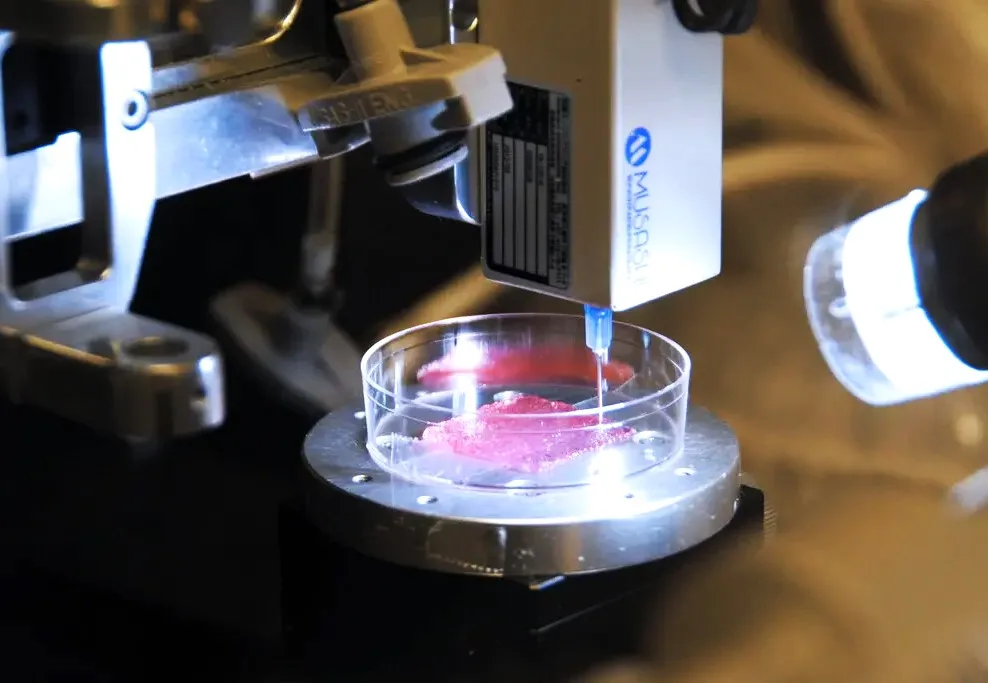Revolutionizing Medicine: The Promise of Bioprinting Organs
Bioprinting has become a cutting-edge technology in the rapidly changing field of medical science, with the potential to completely transform organ transplantation. The global scarcity of donor organs can be addressed in new ways thanks to the ability to create functional organs through 3D printing techniques. This essay will examine the intriguing field of bioprinting, its present state, and its bright future in the medical industry.

The Current Organ Transplantation Challenge
Organ transplantation has long been a crucial medical procedure for treating various life-threatening conditions. However, the shortage of donor organs remains a significant obstacle. Thousands of patients around the world are on waiting lists, hoping for a chance to receive a life-saving organ transplant. This scarcity has led to the exploration of alternative solutions, with bioprinting emerging as a potential game-changer.
Understanding Bioprinting
Bioprinting is a cutting-edge technology that involves the layer-by-layer deposition of biological materials to create three-dimensional structures, mimicking the architecture of natural organs. This process typically utilizes a combination of cells, biomaterials, and growth factors to construct tissues and, eventually, entire organs. The concept of bioprinting brings together principles from engineering, biology, and medicine to address the complexities of recreating functional organs.
The Bioprinting Process
The bioprinting process involves several key steps:
Selection of Bioink: Bioink serves as the “ink” for bioprinters, containing living cells and other biomaterials. Researchers carefully choose bioinks to ensure they are compatible with the targeted organ and capable of supporting cell growth and differentiation.
Layer-by-Layer Deposition: Bioprinters deposit successive layers of bioink to build the desired three-dimensional structure. This layering process is crucial for recreating the intricate architecture of organs, allowing for the precise placement of cells and biomaterials.
Cell Viability: Maintaining the viability of cells during and after the bioprinting process is critical. Researchers employ advanced techniques to ensure that cells remain alive and functional, contributing to the development of a fully functional organ.
Current Achievements in Bioprinting
While bioprinting is still in its early stages, significant progress has been made. Researchers have successfully bioprinted tissues such as skin, cartilage, and blood vessels. These achievements mark important milestones on the path toward bioprinting more complex organs like the heart, liver, and kidneys.
Challenges and Ethical Considerations
Despite the promising advancements, bioprinting faces challenges such as scalability, vascularization, and long-term functionality. Ensuring the integration of printed organs into the recipient’s body and preventing immune rejection remain areas of active research. Ethical considerations regarding the source of cells, patient consent, and the potential commercialization of bioprinted organs also require careful examination.
The Future of Bioprinting
The potential of bioprinting to transform the field of organ transplantation is immense. As technology advances and researchers overcome current challenges, bioprinting could provide a scalable and sustainable solution to the organ shortage crisis. The ability to tailor organs to individual patients, reducing the risk of rejection, represents a paradigm shift in personalized medicine.
Organ bioprinting is a cutting-edge medical innovation that has the potential to save a great deal of lives by addressing the organ shortage. The field is still being advanced by ongoing research and technological advancements, despite persistent challenges and ethical considerations. The idea that bioprinted organs will eventually be used routinely in medicine gives us excitement and hope for the future, marking the start of a new chapter in the history of healthcare.
References:
Murphy SV, Atala A. (2014) 3D bioprinting of tissues and organs. Nature Biotechnology, 32(8), 773–785. doi:10.1038/nbt.2958
Gao G, Schilling AF, Yonezawa T, et al. (2015) Bioactive nanoparticles stimulate bone tissue formation in bioprinted three-dimensional scaffold and human mesenchymal stem cells. Biotechnology Journal, 10(9), 1563–1570. doi:10.1002/biot.201500156
Mironov V, Reis N, Derby B. (2006) Bioprinting: a beginning. Tissue Engineering, 12(4), 631–634. doi:10.1089/ten.2006.12.631
Lee W, Debasitis JC, Lee VK, et al. (2009) Multi-layered culture of human skin fibroblasts and keratinocytes through three-dimensional freeform fabrication. Biomaterials, 30(8), 1587–1595. doi:10.1016/j.biomaterials.2008.12.006
Ozbolat IT, Hospodiuk M. (2016) Current advances and future perspectives in extrusion-based bioprinting. Biomaterials, 76, 321–343. doi:10.1016/j.biomaterials.2015.10.076.

3 thoughts on “The Promise of 3D Bioprinting Organs. Revolutionizing Medicine.”